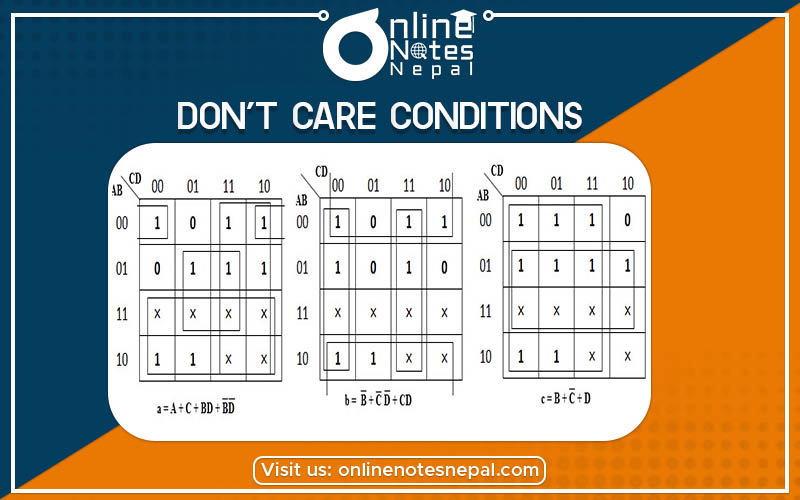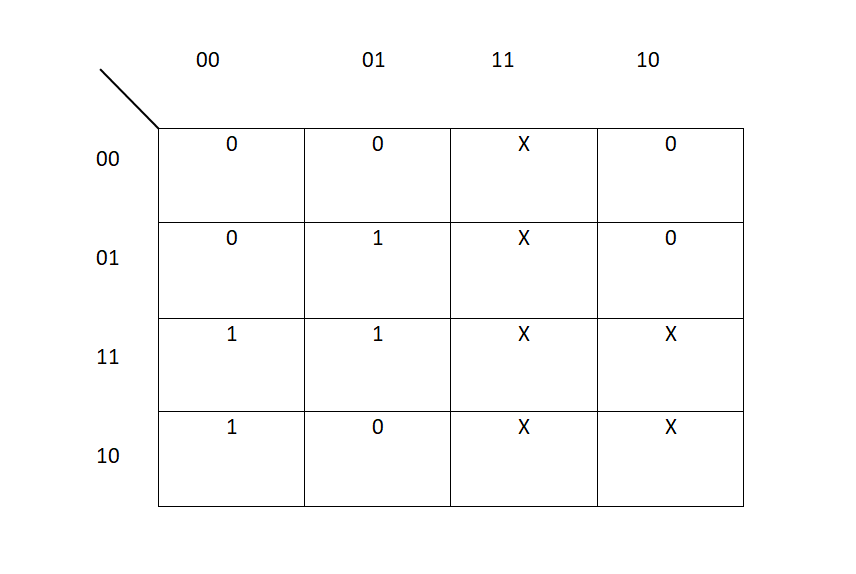Published by: Nuru
Published date: 22 Jun 2021

Don’t Care Conditions are those conditions that are used sometimes when we do not care either 0 or 1 are used as the sets of inputs. This is the condition that can be used either with 0s or with 1s. It is such a condition that doesn’t make any of the difference between the input variables.
We can use the don't care symbol for converting an SOP in a POS a vice-versa. An SOP function having don’t care can be converted into a POS by keeping don’t care as it is, and writing the missing minterms of the SOP form as the maxterm of POS one. Similarly, a POS problem having a don’t care can be converted to SOP function by keeping the don’t care as they are and writing the missing max terms of the POS the minterms of SOP expression. So, in this way, Don't Care Expression is very useful.
In BCD i.e. Binary Coded Decimal, we know know that 4 bits are used to encode the digits from 0 (0000) to 9 (1001). The remaining codes from 10 to 15 are not used. Hence we use Don’t Care conditions in them. It is denoted by ‘X’.
Let us take an example:
F = A̅ B̅ C D̅ + A̅ B̅ C D + A̅ B C̅ D + A̅ B C D
| A | B | C | D | F |
| 0 | 0 | 0 | 0 | 0 |
| 0 | 0 | 0 | 1 | 0 |
| 0 | 0 | 1 | 0 | 1 |
| 0 | 0 | 1 | 1 | 1 |
| 0 | 1 | 0 | 0 | 0 |
| 0 | 1 | 0 | 1 | 1 |
| 0 | 1 | 1 | 0 | 0 |
| 0 | 1 | 1 | 1 | 1 |
| 1 | 0 | 0 | 0 | 0 |
| 1 | 0 | 0 | 1 | 0 |
| 1 | 0 | 1 | 0 | X |
| 1 | 0 | 1 | 1 | X |
| 1 | 1 | 0 | 0 | X |
| 1 | 1 | 0 | 1 | X |
| 1 | 1 | 1 | 0 | X |
| 1 | 1 | 1 | 1 | X |
Now, if we keep these values in the k-map, it will look like follows:

Reduction rules for POS using K-map
• preparing a truth table for the given function.
• drawing empty k-map.
• Filling the values of zeros only because POS uses 0s and SOP uses 1s.
• Now, filling the remaining cells with one.
• Marking the pairs or quads or octads together using squares.
• Then. Implying the AND operation for solving the problem.